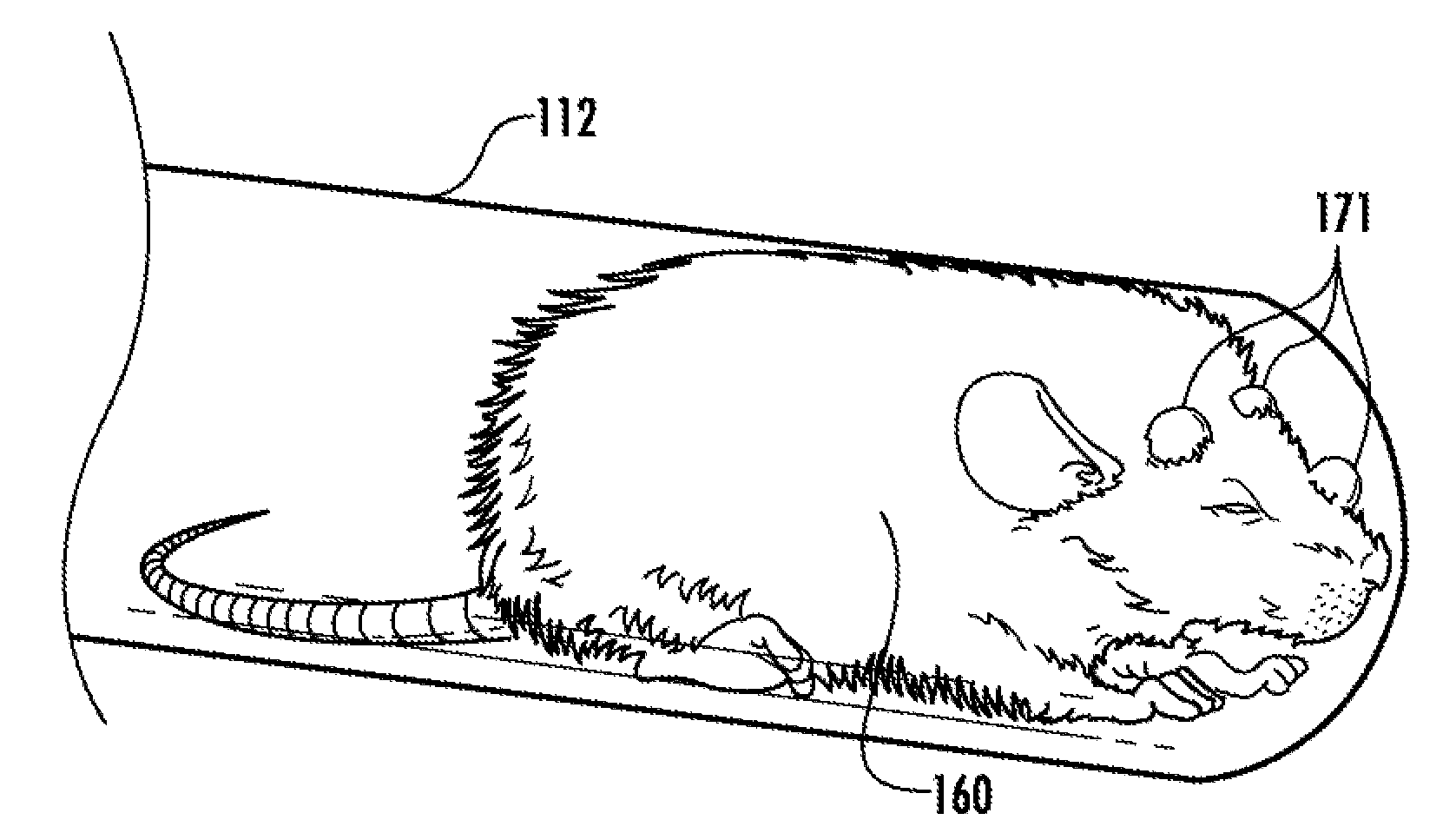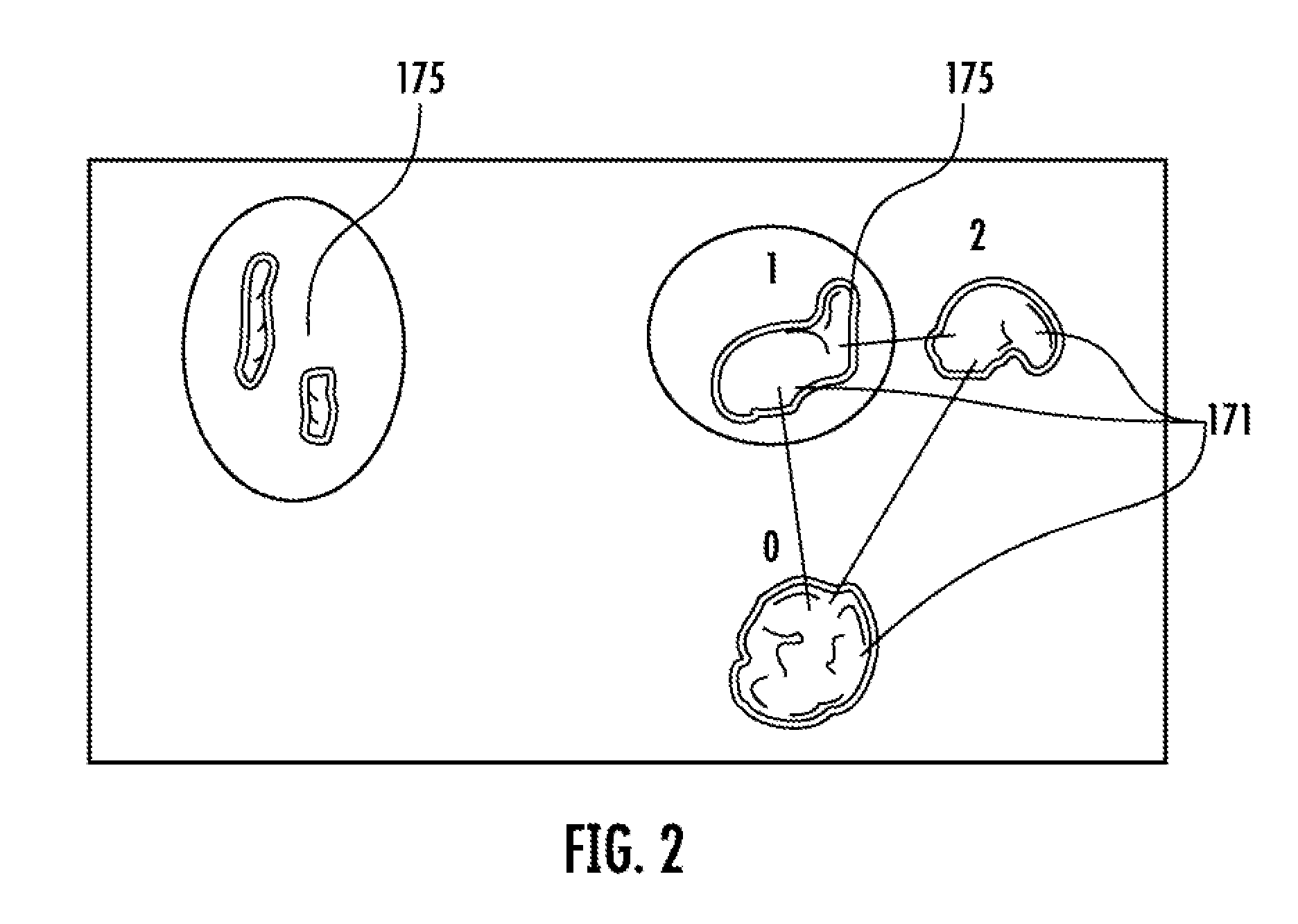System and method for tracking motion for generating motion corrected tomographic images
- Summary
- Abstract
- Description
- Claims
- Application Information
AI Technical Summary
Benefits of technology
Problems solved by technology
Method used
Image
Examples
examples
[0067]It should be understood that the Examples described below are provided for illustrative purposes only and do not in any way define the scope of the invention.
example # 1
Example #1
[0068]FIG. 1 shows an optical image of a mouse 160 fitted with three optical retro-reflective markers 171 on its head in a burrow 112. Images of the mouse with the retro reflectors from each camera and with tracking enabled are shown in FIG. 5. Tracking is shown by lines connecting the center of each marker 171. Also visible are reflections off the glass tube enclosure that have been ignored. The markers are outlined and numbered showing that they have been segmented and that correspondence has been determined. In this depiction, the lines between the markers 171 indicate that successful model fitting has been performed and that a full 3D transformation has been calculated between the camera reference frame and the model reference frame.
example # 2
Example #2
[0069]As described above, specular reflections 175 can make it difficult to discern markers 171. This problem is apparent from the specular reflections 175 in FIG. 2 and the illustration in FIG. 6. One way to eliminate specular reflections is the use of polarized light, polarizing filters, or both. Maulus' law for determining polarized light intensity is:
I(θ)=Io cos2(θ) (1)
[0070]In Equation 1, I(θ) is the detected intensity, which is related to the input light intensity, Io, by a factor of the square of the cosine of the relative angle (θ) 200 between the input light state-of-polarization (SOP) axis 205 and the transmission axis 210 of the preceding polarizer (polarization filter), as shown in FIG. 7.
[0071]In FIG. 7, an unpolarized light beam of radiation, Is (e.g., infrared radiation) is passed through a linear polarizer 215 where it looses half of its original intensity. This can be explained by the assumption an unpolarized light source can be decomposed into two ortho...
PUM
 Login to View More
Login to View More Abstract
Description
Claims
Application Information
 Login to View More
Login to View More - R&D
- Intellectual Property
- Life Sciences
- Materials
- Tech Scout
- Unparalleled Data Quality
- Higher Quality Content
- 60% Fewer Hallucinations
Browse by: Latest US Patents, China's latest patents, Technical Efficacy Thesaurus, Application Domain, Technology Topic, Popular Technical Reports.
© 2025 PatSnap. All rights reserved.Legal|Privacy policy|Modern Slavery Act Transparency Statement|Sitemap|About US| Contact US: help@patsnap.com



